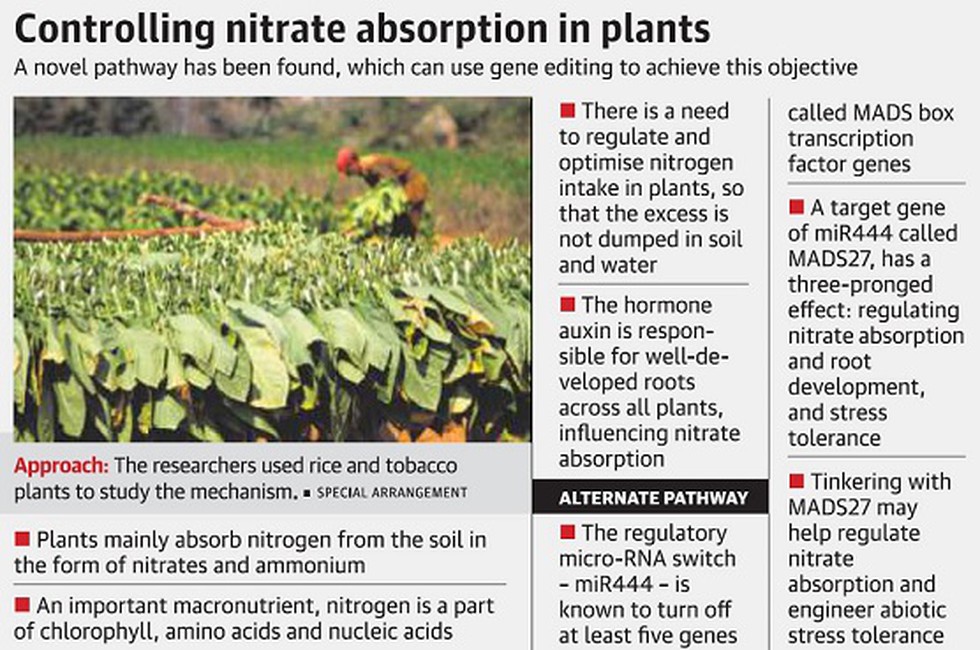ForumIAS announcing GS Foundation Program for UPSC CSE 2025-26 from 27th May. Click Here for more information.
Contents
What is the News?
Researchers from the National Centre of Biological Sciences, Tata Institute of Fundamental Research, Bengaluru(NCBS-TIFR) have found a new pathway that regulates nitrate absorption in plants.
How are Nitrates absorbed by roots?

Nitrogen is one of the most important macronutrients needed for the development of a plant. It is a part of chlorophyll, amino acids and nucleic acids, among others.
It is mostly sourced from the soil where it is mainly absorbed in the form of nitrates and ammonium by the roots.
What role do Nitrates play in the development of a plant?
Nitrates play a role in controlling genome-wide gene expression that in turn regulates root system architecture, flowering time, leaf development, etc.
Thus, while a lot of action takes place in the roots to absorb and convert nitrogen into useful nitrates, the absorbed nitrates in turn regulate plant development apart from being useful as a macronutrient.
What happens due to the overuse of Nitrates?
The overuse of nitrates in fertilizers leads to the accumulation of nitrates in water and soil. This accumulation adds to soil and water pollution and increases the contribution of greenhouse gases. To avoid this, there should be the optimal use of nitrates.
What is the method found by researchers to regulate nitrate absorption in plants?
Researchers have studied a target gene of miR444 called MADS27. It is a transcription factor which has not been studied before.
Note: Transcription factors are proteins involved in the process of converting, or transcribing, DNA into RNA. Transcription factors include a wide number of proteins, excluding RNA polymerase, that initiate and regulate the transcription of genes.
Importance of MADS27: Researchers have found that this MADS27 has a three-pronged effect on the plant:
First, it regulates nitrate absorption by switching “on” proteins involved in this process.
Second, it leads to better development of the roots by regulating auxin hormone production and transport.
Finally, it helps in the abiotic stress tolerance by keeping the main stress player proteins “on.”
Hence, MADS27 provides an alternate means of regulating and optimizing nitrate absorption.
Source: The post is based on the article “New pathway to regulate nitrate absorption in plants” published in The Hindu on 3rd July 2022.




